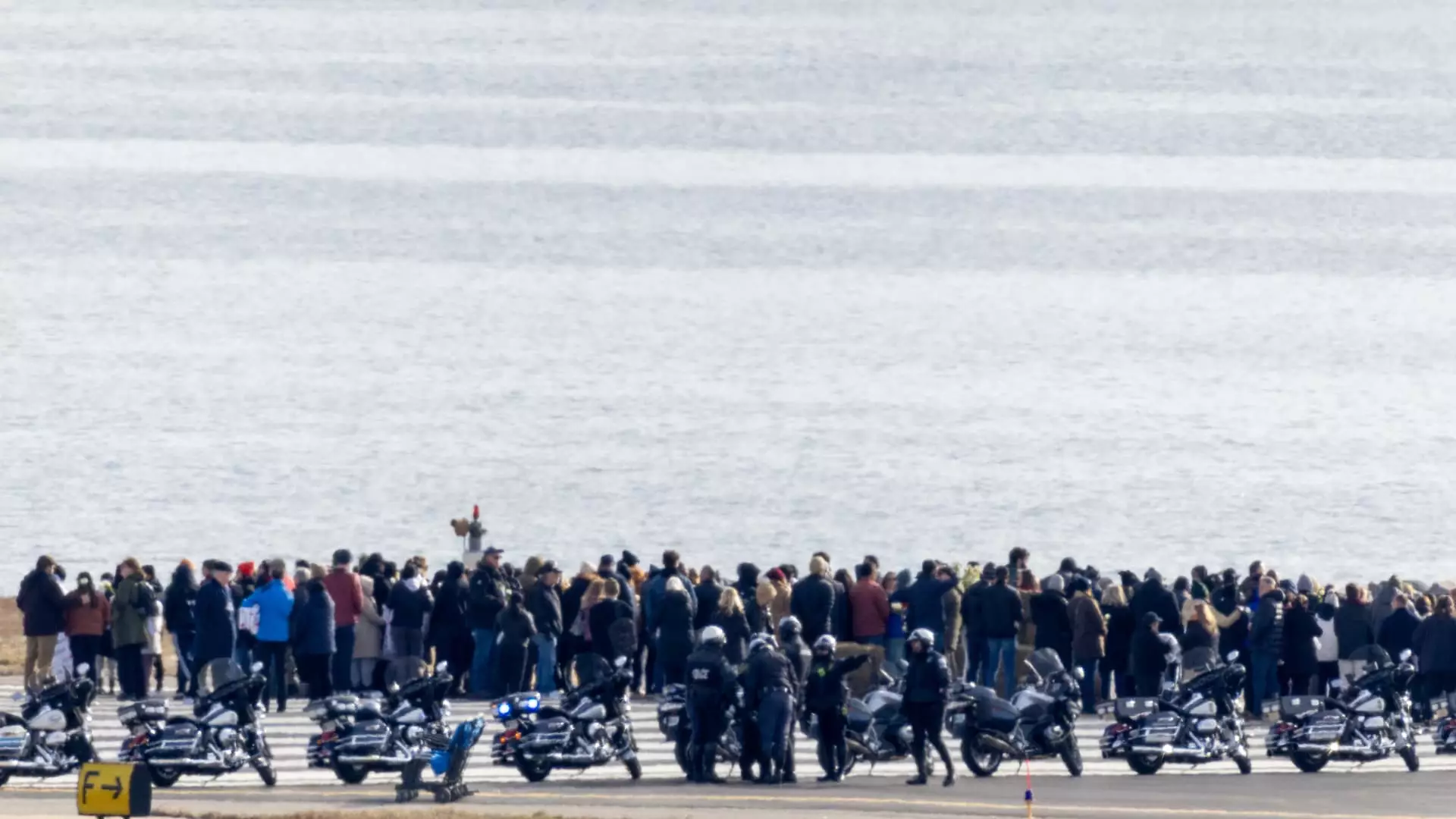On a fateful Wednesday, the skies over the Potomac River turned into the scene of a grievous accident, resulting in the loss of 67 lives. The catastrophic collision involved an American Airlines regional jet and an Army Black Hawk helicopter. Investigators confirmed that, by the following Tuesday, the remains of all 67 victims had been recovered, with 66 of them identified by the D.C. Fire and EMS department. The gravity of this incident cannot be overstated, marking it as the deadliest air crash in the United States since 2001, and the first major passenger airline disaster in a span of nearly 16 years.
At the heart of the investigative efforts lies the National Transportation Safety Board (NTSB), which has prioritized uncovering the cause of this tragic event. Preliminary reports indicate that the helicopter was operating at around 300 feet when the incident occurred—surpassing the 200-foot limit for helicopters in that region as dictated by Federal Aviation Administration (FAA) regulations. However, the NTSB has been prudent in reminding the public that comprehensive analyses of the collision’s circumstances are still underway, especially since critical data awaits extraction from the Black Hawk’s wreckage submerged in the river.
The aircraft involved, an American Airlines Bombardier CRJ-700, was perilously close to landing at Washington, D.C.’s Reagan National Airport when the accident struck. Tragically, all 64 passengers on board the flight and the three military personnel aboard the helicopter perished. The helicopter was reportedly conducting a training mission at the time of the accident, which adds another layer of complexity to the investigation.
In the days following the collision, rescue responders faced the monumental task of retrieving wreckage from both aircraft. Crews have successfully extracted significant parts of the airplane, including the right wing, the central fuselage, and pieces of the cabin. The removal of these components not only serves to clear the crash site but also aids in the investigative efforts to piece together what led to this devastating accident.
While such air disasters are rarity in the modern aviation landscape, their impact resonates profoundly across communities, especially for those who have lost loved ones. American Airlines has expressed empathy and commitment towards supporting the victims’ families during this trying period. CEO Robert Isom announced a moment of silence planned for a week following the incident, emphasizing the airline’s dedication to caring for all affected by this tragedy.
In the wake of this disaster, American Airlines activated its CARE Team, comprising approximately 2,000 volunteers from across the company. These employees have undergone specialized training by the airline’s emergency planning and response teams, equipping them to assist victims’ families with practical support during such heart-wrenching times. Their responsibilities encompass a variety of crucial tasks, including coordinating travel arrangements for bereaved families, arranging care for dependents and pets, and providing logistical help.
Isom’s message highlighted the importance of this initiative, stating that supporting families affected by the incident remains a top priority for American Airlines. The presence of the airline’s COO and operations team in Washington, D.C., further underscores the company’s commitment to immediate assistance during this period of mourning.
While investigations continue to seek clarity on the circumstances leading to the collision, the aviation industry must reflect on the broader implications of this incident. The FAA has issued indefinite restrictions on helicopter flights near D.C.’s Reagan National Airport, a response aimed at preventing similar tragedies in the future. With air traffic becoming increasingly congested, particularly in urban areas, enhancing communication and safety protocols is crucial for ensuring the safety of both aircraft and civilians on the ground.
As attention shifts toward preventing future accidents, the collaboration between airlines, military operations, and regulatory bodies becomes ever more essential. This tragic incident serves as a somber reminder of the fragility of human life and the critical importance of stringent safety measures in the aviation sector. As investigations unravel the details of the crash, it is vital that lessons are learned to mitigate risks moving forward, so that no family has to endure the heartbreak experienced by those affected by this catastrophic event.

